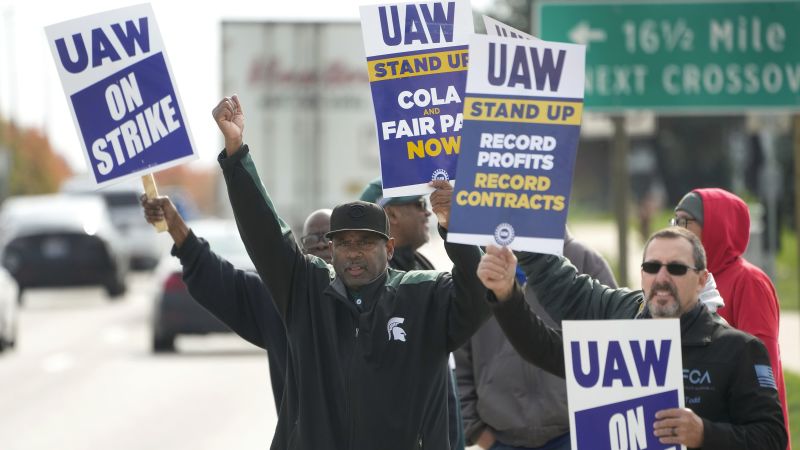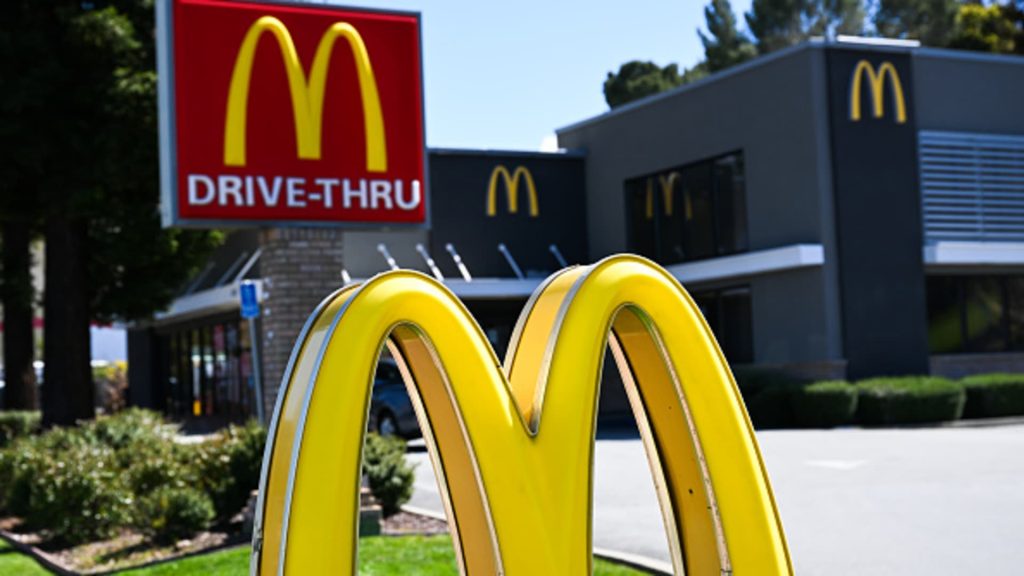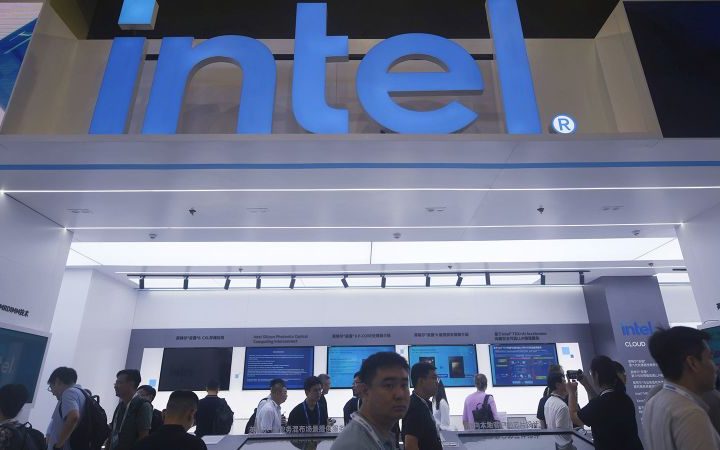Historic strikes by autoworkers in North America reduced revenue at Stellantis €3 billion ($3.2 billion), the company said Tuesday, but it added that the strike and the cost of new labor contracts won’t stop it from hitting its profit target for the year.
The company reached a tentative agreement with the United Auto Workers union (UAW) on Saturday, but not before the nearly seven-week work stoppage dealt a blow to production and sales. The automaker also had a brief strike at its Canadian operations Monday that lasted less than eight hours before a separate tentative contract was reached with Unifor, the union there.
Stellantis (STLA) reported better-than-expected revenue for the July-September period, up 7% on the same quarter in 2022 at €45.1 billion ($48 billion). It shipped more than 1.4 million vehicles in the quarter, up 11% on 2022.
Its North American sales and revenue posted a modest gain. Vehicle deliveries were up 6.6% in the quarter to 470,000 vehicles, and North American revenue edged up only 1.9% to 21.5 billion euro, or $22.9 billion. The UAW strike reduced the number of vehicles sold in both September and October by about 50,000 said CFO Natalie Knight.
Electric vehicle sales climbed 37% on the previous year, driven by demand for the Jeep Avenger and Citroën ë-Berlingo. Most of its EV sales are in Europe as the company has yet to debut a pure electric vehicle in the North American market.
Stellantis said it remains on track to an adjusted operating profit margin of 10% for the year. That’s the same target it gave when it reported first-half profits in July.
Besides the cost and disruption caused by the North American strikes, Stellantis now faces a possible recession in Europe, which accounts for 40% of its sales, making it the company’s largest market. Gross domestic product across the 20 countries that use the euro fell 0.1% in the July-to-September quarter compared with the previous three months.
Stellantis, which makes vehicles for the US market under the Jeep, Ram, Dodge and Chrysler brands, was formed by a 2021 merger of Fiat Chrysler and European automaker PSA Group. It doesn’t release quarterly profits since it is a European company, reporting only full-year and first-half earnings.
Knight said the strikes would cost Stellantis less than €750 million ($800 million) in terms of profits, during an investors call. She declined to give estimated cost of the contract going forward ahead of the union holding its ratification vote among its rank-and-file members. Knight noted the hit to its profits should be the smallest among the three unionized automakers struck by the UAW.
Last week, General Motors (GM) said walkouts by its workers had cost the company $200 million in the first two weeks and another $600 million in the first three weeks of October. Losses at GM likely increased after that as the UAW added its largest and most profitable plant to its strike targets a week ago. GM reached its own deal with the UAW on Monday.
Ford, which was the first to reach a deal with the UAW last Wednesday, reported the strike reduced earnings before interest and taxes by about $100 million in the just-completed third quarter. And it said it likely lost the chance to produce 80,000 vehicles that it had planned to build and sell during the year, which will reduce full-year EBIT by about $1.3 billion.
The 10% profit margin for the year would be down from what Stellantis earned in the first half of this year, when it hit 14.4%. That result was down slightly from the 14.5% margin in the same period of 2022. Margins were even better in North America, where it hit a 17.5% margin in the first half of this year.
The strong profits going into these labor negotiations are why the UAW was demanding a record contract from all three automakers. They won large pay increases in the tentative agreements, which now face a ratification vote among rank-and-file members.
The UAW has hailed the deal that ended the prolonged walkouts at Stellantis as a major victory. The agreement, which must still be approved by the union’s members, will see wages rise by 25% over the next four and a half years. It also includes the re-opening of an Illinois assembly plant that was closed in February, originally costing 1,200 jobs.
Shares in the company were up more than 2% in morning trading in Milan.
Read the full article here







